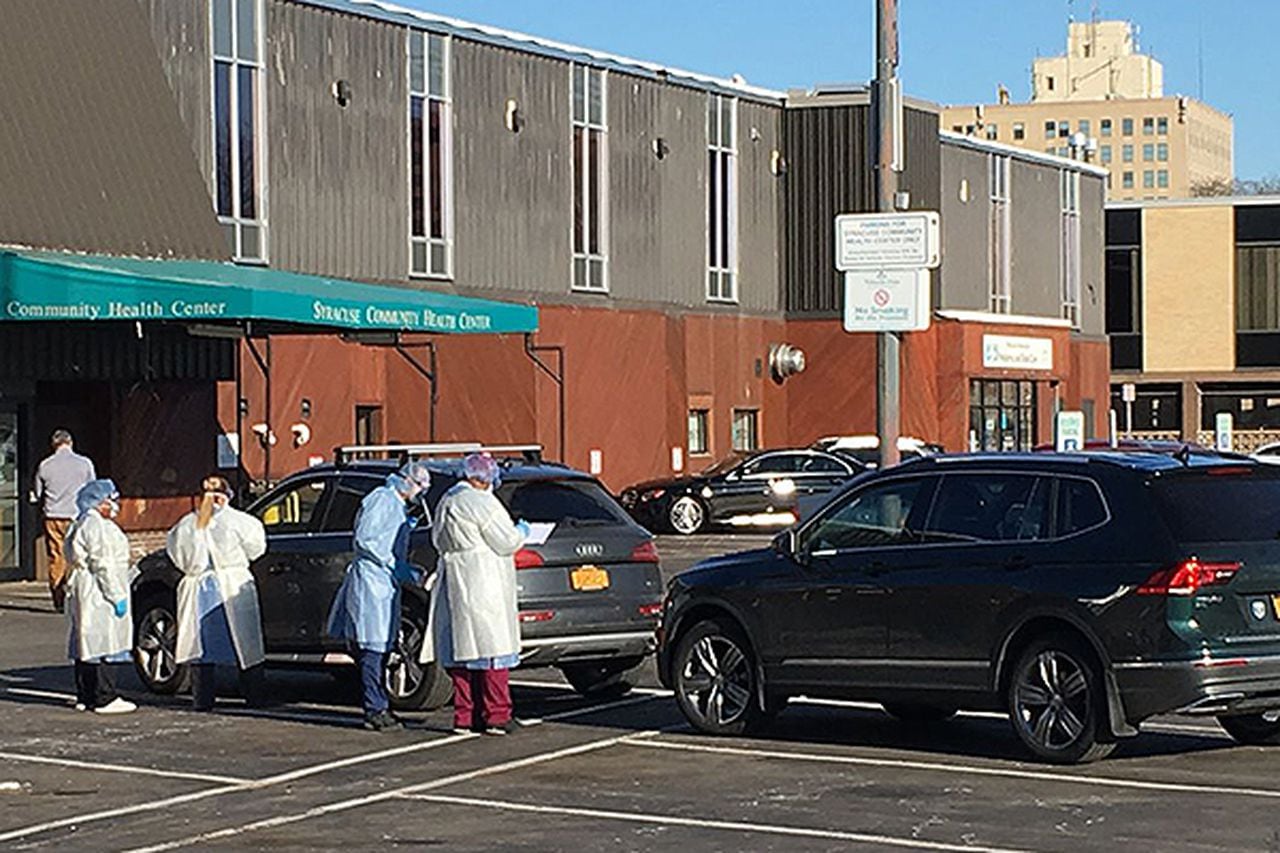Syracuse, N.Y. — AMR ambulance and the Syracuse Community Health Center are joining forces to help ease overcrowding in Syracuse hospital emergency rooms.
Starting Nov. 1 AMR crews will evaluate Medicare patients who call 911 to determine if they can be treated at the health center instead of an ER.
If paramedics determine the patient’s condition is not serious enough to warrant ER care, the patient will be given the option of being transported to the health center for care. The patient will have the final say.
Many patients go to ERs for relatively minor illnesses and injuries. “That means other individuals who go to the ER and need a higher level of service are not able to be seen quickly,” said Derrick Murry, the health center’s chief business development officer.
A recent report by Accenture, an information technology consulting firm, estimated unnecessary ER visits in the U.S. cost at least $47 billion annually.
ER wait times at Syracuse hospitals have been longer than usual lately because of a chronic nursing shortage coupled with a surge of patients with Covid-19 and other illnesses. Local ERs were so backed up during the summer they set a record for how often they temporarily shut their doors to ambulance patients.
The partnership between AMR and the health center is part of a five-year federal program designed to reduce avoidable ED visits and hospitalizations, reduce costs and improve care.
AMR, short for American Medical Response, provides medical transportation services in 40 states and the District of Columbia.
The health center, founded in 1978, is one of about 1,300 nonprofit community health centers nationwide created by federal legislation that provides some funding for the facilities. The centers are required by law to cater to medically underserved populations. The health center is open to all patients, regardless of their ability to pay.
Medicare historically has only paid for ambulance services when patients are transported to hospitals, nursing homes and dialysis centers. As a result, most people who call 911 are taken to hospital ERs even if they don’t need that level of care. Medicare is the federal health insurance program for people 65 and older and the disabled.
Under the new program, Medicare will pay ambulance companies to take patients to participating urgent care clinics, primary care offices and health centers.
Medicare pays 80% of the cost of an ambulance trip and patients are responsible for the remaining 20%.
For now, the Syracuse Community Health Center is the only alternative primary care provider approved to take Medicare patients from AMR. Eventually more primary care providers and insurers are expected to participate in the program, said Nick Corbishley, AMR’s Syracuse operations manager.
AMR paramedics and emergency medical technicians also offer Medicare patients who call 911 with relatively minor problems the option of being treated at home via telehealth. AMR crews will set up remote video conferences in the field with doctors for Medicare patients who may have called 911 for something as simple as a prescription refill or to get a minor wound checked out, Corbishley said.
The Syracuse Community Health Center expects to initially get 90 to 100 patients a month from AMR. It will hire more staff to handle the extra patients. Ambulances will deliver patients to an entrance in the front of the health center’s building at 819 S. Salina St. from 9 a.m. to 7 p.m. Monday through Friday. The health center plans to add weekend hours in a few weeks.
In addition to easing pressure on hospital ERs, the health center sees the new program as a way to provide ongoing primary care to people who don’t have doctors.
“The emergency room is where many individuals go for primary care because they don’t have primary care physicians,” said Mark Hall, the health center’s president and CEO. “They just wait until their condition deteriorates.”
James T. Mulder covers health and higher education. Have a news tip? Contact him at (315) 470-2245 or jmulder@syracuse.com
